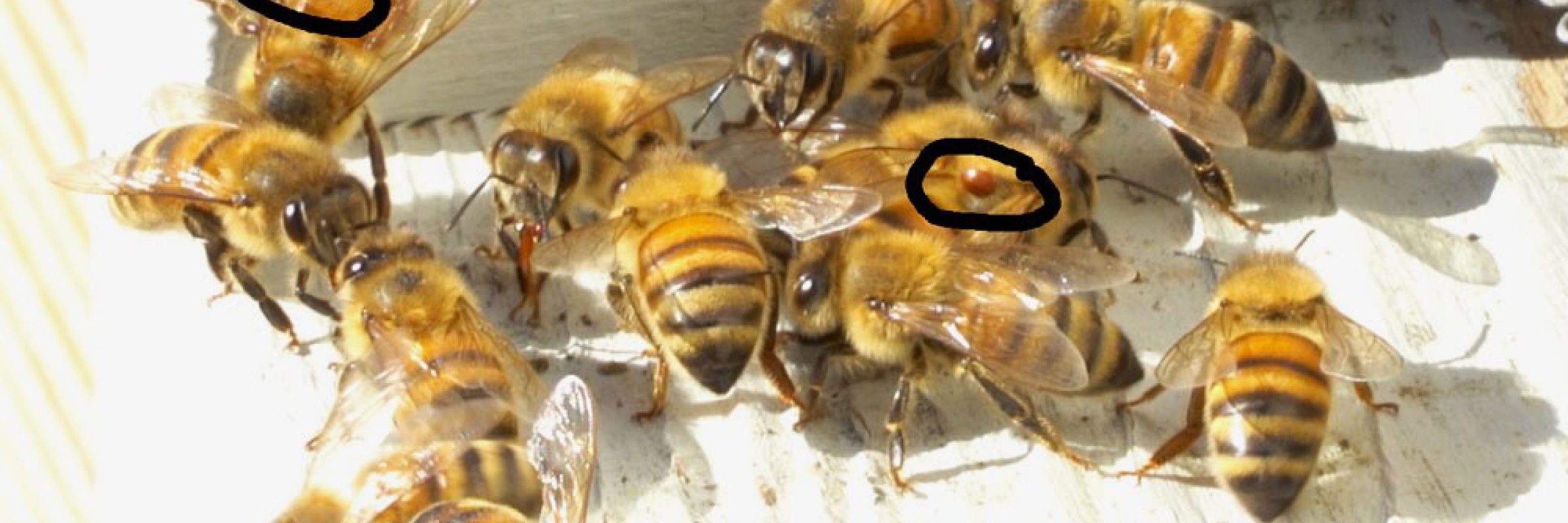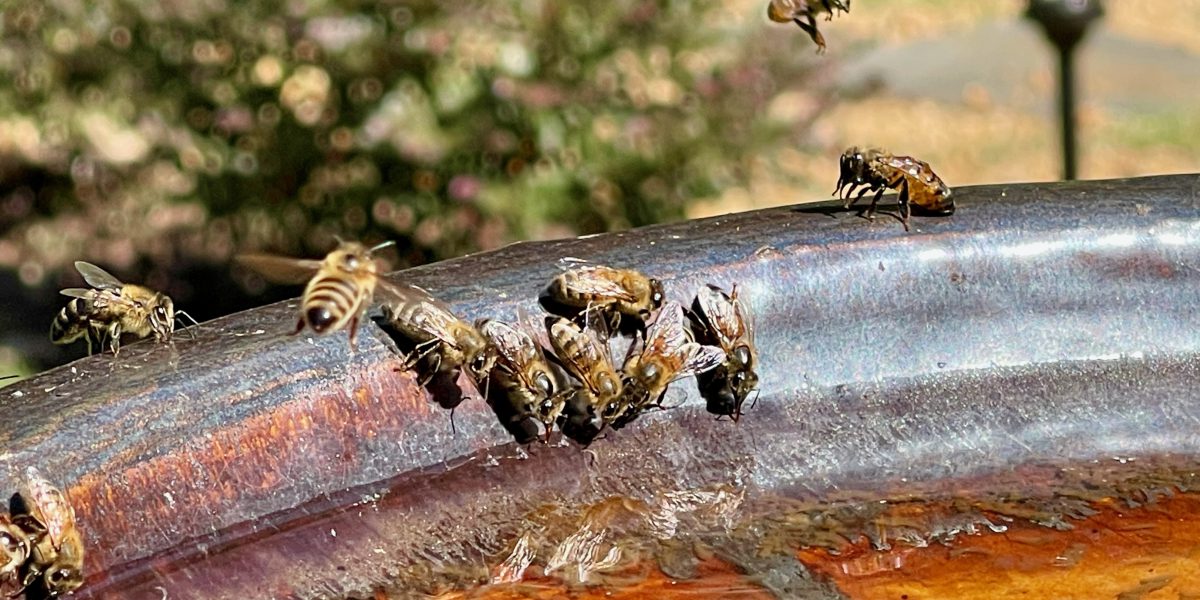article · Beekeeping · by The Backyard Farmer · Sep 9, 2023
Introduction
Varroa destructor, commonly known as the Varroa mite, is a significant threat to honeybee populations in the United States and around the world. These parasitic mites attach themselves to honeybees and weaken the bee colony, ultimately leading to their decline or collapse. Honeybees are vital for pollinating crops, and their decline can have severe consequences for agriculture and the ecosystem. In this article, we will explore the impact of Varroa mites in the United States and discuss effective forms of treatment and prevention
The Varroa Mite Problem
Varroa mites originated in Asia but have since spread globally due to international trade and the movement of honeybee colonies. In the United States, they were first discovered in the late 1980s and have since become one of the most significant threats to honeybee populations. These tiny arachnids, measuring only about 1-2 millimeters in size, feed on the bodily fluids of honeybees, weakening them and transmitting various viruses. Infestations can quickly lead to the collapse of bee colonies.
Impact on Honeybee Populations
The impact of Varroa mites on honeybee populations in the United States cannot be overstated. The mites cause physical damage to bees, weakening their exoskeletons and making them more susceptible to diseases. Moreover, the mites transmit harmful viruses, including deformed wing virus (DWV) and acute bee paralysis virus (ABPV), which can devastate entire colonies.
The decline in honeybee populations has significant implications for agriculture, as honeybees are responsible for pollinating a wide range of crops, including fruits, vegetables, and nuts. According to the United States Department of Agriculture (USDA), honeybee pollination contributes approximately $15 billion annually to the value of U.S. agricultural production. The loss of honeybee colonies due to Varroa mite infestations threatens food security and puts pressure on farmers who rely on these vital pollinators.
Effective Forms of Treatment
The battle against Varroa mites in the United States is ongoing, with beekeepers and researchers continuously searching for effective treatment strategies. Here are some of the most widely used methods:
Chemical Treatments: Chemical treatments involve the use of synthetic or naturally derived compounds to kill or control Varroa mites. Common chemical treatments include Apivar (amitraz), formic acid, and oxalic acid. Beekeepers must follow strict guidelines and safety measures when using these treatments to avoid harming the bees or contaminating honey.
Integrated Pest Management (IPM): IPM is a holistic approach that combines various methods to manage Varroa mite infestations sustainably. This includes using non-chemical treatments like drone brood removal, screened bottom boards, and essential oil treatments. IPM strategies aim to minimize the reliance on chemical treatments, promoting long-term bee health.
Genetic Breeding: Some beekeepers are breeding honeybee colonies for resistance to Varroa mites. By selecting and propagating bees that exhibit natural resistance traits, beekeepers hope to create colonies that can better withstand mite infestations.
Biological Controls: Biological control methods involve introducing natural predators or parasites of Varroa mites to bee colonies. One example is the use of the parasitic mite, Varroa destructor itself, which can be managed and controlled to some extent through various strategies.
Hygienic Behavior: Certain strains of honeybees exhibit hygienic behavior, where they detect and remove mite-infested pupae from the brood cells. Bee breeders are selecting for these traits to improve colony resistance.
Monitoring and Early Detection: Regular monitoring and early detection of Varroa mite infestations are crucial for effective treatment. Beekeepers can use sticky boards, alcohol washes, or powdered sugar rolls to assess mite levels within their colonies.
What works for Us
We began keeping bees in June of 2019. Since that time we have settled on a multi-tiered approach through the year to combat Varroa mites in our backyard hives.
In late December to early January we treat with Oxalic Acid. Oxalic acid is an organic compound found in many plants. OA attacks phoretic mites, those that cling to the bee bodies outside of the brood cells. It can be applied by a “dribble” method but we prefer to use a vaporizer unit.
In years past, prior to the Spring honey flow we treat again using Formic Pro from Nod Apiary Products. Formic Pro, as Oxalic Acid, is a natural product and one of its great advantages is that it can be applied while honey supers are on the hive. However, temperatures should not be below 50 and above 85 degrees during the treatment application. Another advantage to Formic Pro is that it penetrates capped brood cells to attack Varroa mites in the brood cells.
In early 2025 we opted to try the new VarroxSan Oxalic Acid strips. They can be applied while honey supers are on and are not temperature dependent. One strip is placed between every other frame in the brood box with up to five strips used per hive. The treatment period is between 42-56 days. This extended release treatment with VarroxSan strips helps control varroa mites by delivering oxalic acid over multiple brood cycles. The strips should be removed from the hives afterward the treatment period and can be composted. We also used the strips to treat our 5-frame nucs from early season splits, placing two VarroxSan strips 2 frames apart on the brood frames. The VarroxSan strips were so effective that we may choose to use them again in the fall.
After our honey harvest (usually near the end of June or early July) we have the option of treating again using Apiguard from Vita Bee Health. Apiguard is a slow release gel containing the active ingredient Thymol. Thymol is a natural substance derived from the plant thyme. It has the added benefit or treating tracheal mites. Apiguard works well in the heat of the summer, but honey supers should be removed before applying. We use the convenient gel trays that simply involve peeling back the foil cover and placing on the top brood super. The first treatment stays on the hive for 14 days. Then that tray is removed and a new one is applied and remains on the hive for 2-4 weeks. Treatment should be above 60 degrees. We use a spacer between the top brood super to provide enough space for the worker bees to enter the container and begin carrying the thymol out of the hive. As they do this they are traversing the hive and spreading the treatment as they do.
There are several other treatment options but these four have worked well for us and incorporate naturally occurring substances that are effective in combatting mites.
Conclusion
It is imperative that the beekeeper stay on top of the varroa mite problem in their apiary. All bee hives are currently susceptible to varroa mites. If the beekeeper does not treat his hives he will not only lose them, but may become a “mite bomb” source problem for other beekeeper’s hives in the local vicinity. The key to effective varroa pest management is regular mite level testing and developing a treatment plan that works in your apiary. Beekeepers and researchers are continually striving to find innovative solutions to combat Varroa mite infestations while minimizing the use of chemical treatments. By adopting a multifaceted approach we can hope to protect honeybees and ensure the essential services they provide to our food supply and ecosystems.



